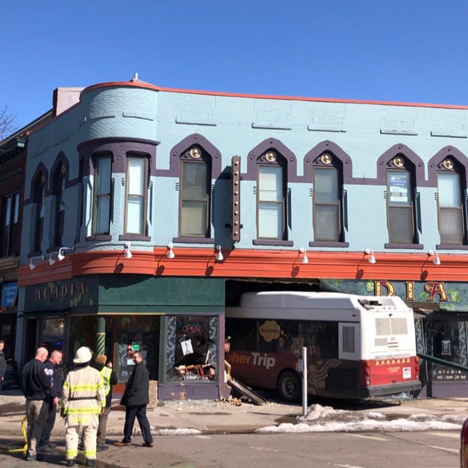Excuse Club
329 Cedar Ave. So.
Minneapolis
Thank you to Alan Slacter and the folks on Facebook for their help with this complicated venue!
This is the story of 329 Cedar Ave. So. in the Cedar-Riverside area on the West Bank, by the University of Minnesota. It’s unusual that a building has held so many different music venues. This one has hosted:
- Chuck’s Skol Club
- The Alibi Club
- The Excuse Club
- The New Riverside Cafe
- The Acadia Cafe
LARSEN’S SALOON
This property is listed as 329 – 331 Cedar Ave. in the City’s records. It goes back to 1898 when it cost $8,000 to build a 22 x 60 brick store building. The City’s permit cards mention both a saloon and a store, and it’s difficult to tell whether they are talking about the same address or two different addresses. Nels M. Nordeen obtained a liquor license in 1899; Nels Benson was the proprietor when the saloon was robbed in 1906. From at least 1909 to 1919, the proprietor was Albert Theodore Larsen (1869 – 1951). The bar was owned by the Minneapolis Brewing Company, which made Golden Grain Belt Beer. Jeff Lonto explains:
Before Prohibition (1920-1933) breweries owned their own saloons, called “tied houses” that exclusively served their products. The practice was banned after Repeal. Minneapolis Brewing Company officially changed its name to Grain Belt Breweries, Inc. in May 1967.
Below is a photo of the saloon from 1919. Unfortunately, there doesn’t seem to be a name on it other than all the Grain Belt signs. Thanks to Alan Slacter for finding the photo!
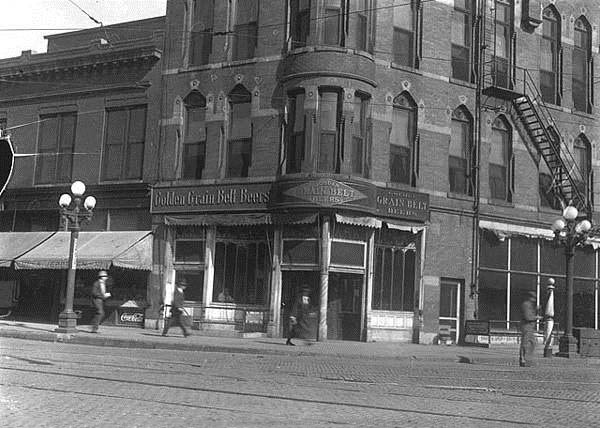
327 Cedar Ave. Photo courtesy Minnesota Historical Society
HALL
There was also some kind of hall in the building; a notation in 1904 on the permit card mentions “store and hall,” and in 1907 there was a club room used by the South Side Commercial Club. The word “club” is used again in 1923, and in 1934 the newspaper mentions a CWA Workers Organization and a Steel and Metal Workers Hall. The building was also used as a “concentration point” for the Trucker’s Strike of 1934. Whether this hall was on the second or third floor is unknown.
PROHIBITION AND BEYOND
In 1920 the 20-year-old saloon had to close its doors, and it appears that it became a National Tea Grocery Store until 1934. Unfortunately, there was a fire in January 1921, causing $2,000 damage, but repairs were made. Various meat markets advertised that operated inside the store.
Come 1934 and liquor flowed again – Louise Rouse leased the building for the King Cole Liquor Store, but got in trouble when she sold liquor to a 17-year-old who got drunk and went out and stole cars. The license was transferred and the store remained until 1940.
In 1941 we see the Blue Goose Cafe, and not the one up north where the gangsters hung out. This one operated from about November 1941 to 1950, although the building was still a restaurant in 1954, so the Blue Goose might have lasted longer.
Note that the third floor was removed in January 1946, at a cost of $1,000 for demolition and $2,000 for alterations to the building. This action does not seem to be a result of a fire or other catastrophe that I could find.
On December 23, 1953, there was another fire in the building, but Trixie the dog managed to wake up all the sleeping tenants. But then some miscreant broke into a fire damaged door and ransacked the cafe. Repairs in March 1954 cost $12,000; more repairs in July took another $2,000.
CHUCK’S SKOL CLUB
329 wasn’t the only building having fires. 326 burned down completely, leaving the Klondike Club in the lurch. It moved across the street into the newly refurbished building, and was renamed Chuck’s Skol Club. Chuck who, I don’t know. The first ad appeared on September 21, 1955.
Janet Charles had been the star over at the Klondike Club; Will Jones called her “The Girl who Tamed Cedar Avenue.” Her schtick was to dance on the bar, which could be hazardous, especially when mean women poured beer on it to make it slippery. She moved her act over to Chuck’s when the Klondike closed.
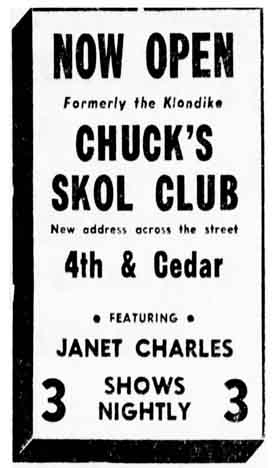
Minneapolis Tribune, September 21, 1955
Janet got her wish to do her Bubble Bath routine, which she copied from Lili St. Cyr, at Chuck’s. The Klondike wouldn’t accommodate her need for water.
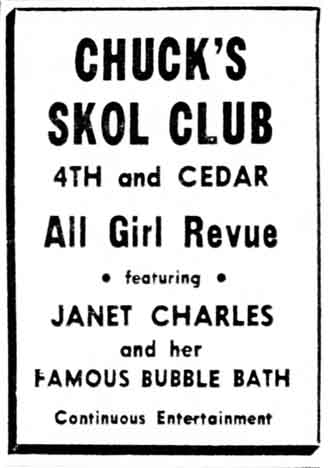
Minneapolis Tribune, July 19, 1956
Below is the final ad for Chuck’s I could find in the Minneapolis papers. The “re-opens” refers to a 10-day suspension the club received when a waitress was caught serving a customer after hours.
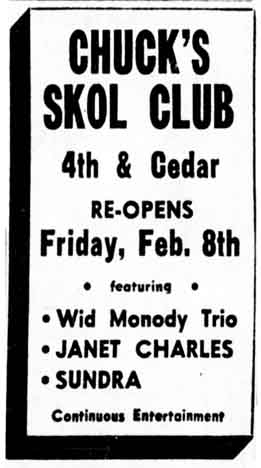
Minneapolis Tribune, February 9, 1957
ALIBI CLUB
By August 1958, 329 had become the Alibi Club – basically a strip joint. When the Twins came to town in 1961 the head stripper added a baseball number to her act, reported Will Jones. Leering allowed.
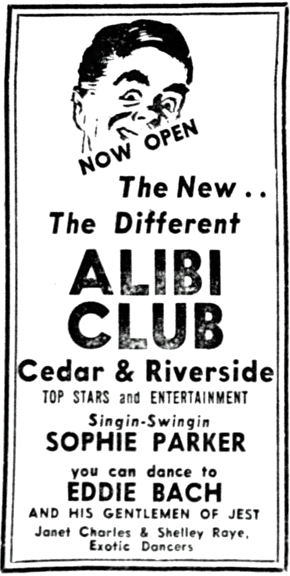
Minneapolis Star, August 8, 1958
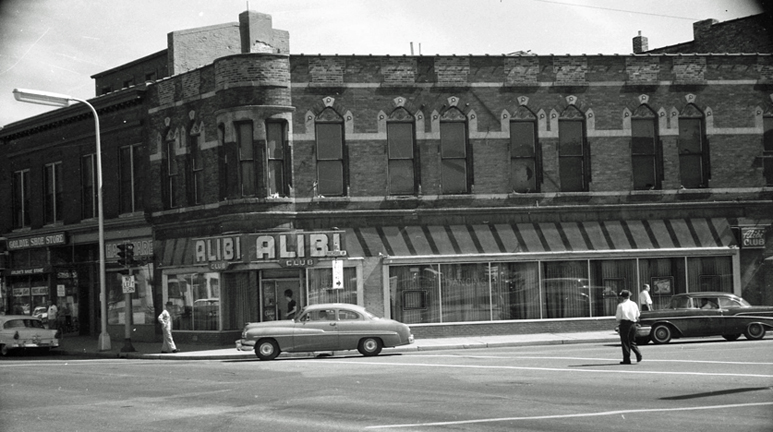
1960 photo courtesy Hennepin County Library
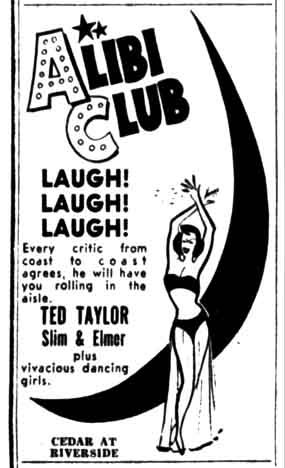
Minneapolis Star, November 11, 1960
The Alibi Club’s liquor license was purchased by the Black Sheep Club, which moved to 901 Marquette Ave. in November 1961. That’s when the Alibi Club closed.
WALTER’S BAR
Walter Holmes was mentioned as the proprietor of the place in October 1963. In April 1964, a Kenneth King wanted to take over the liquor license, but was denied because the place was too close to the U of M and was being frequented by minors. Walter’s name was listed as Walter R. Home.
EXCUSE CLUB
By December 1964, 329 Cedar had become the Excuse Club, presenting Country/Western entertainment until about July 1967. I’m so excited to see this photo!
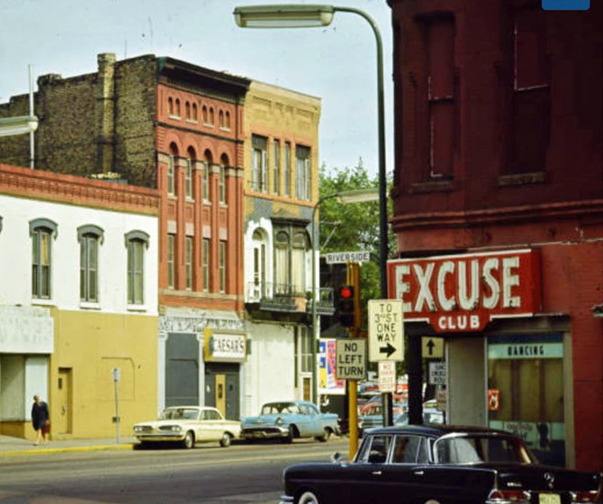
Photo courtesy Hennepin County Library
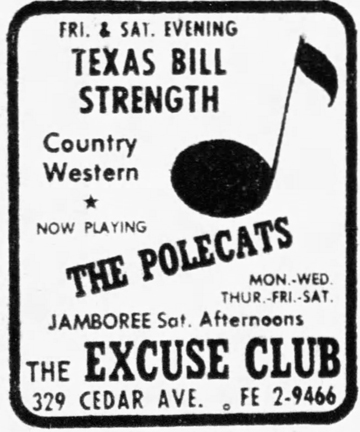
Minneapolis Star, October 7, 1965
NEW RIVERSIDE CAFE
The New Riverside Cafe moved in in late 1971 and closed on May 10, 1997.
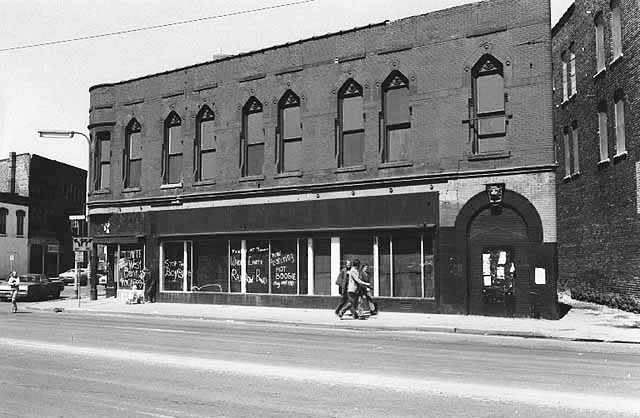
329 Cedar Ave., 1972. Courtesy Minnesota Historical Society
AND THE LIST GOES ON
For some reason the location had a string of bad luck, with several restaurants that came and went:
- Cafe Bellaluna, April 1998
- Emerald Cafe, Summer 1998
- Grey Duck, September 1999
- Falafel King, August 2000
ACADIA CAFE
As of 2009 the building has hosted the Acadia Cafe, which is also a music venue.
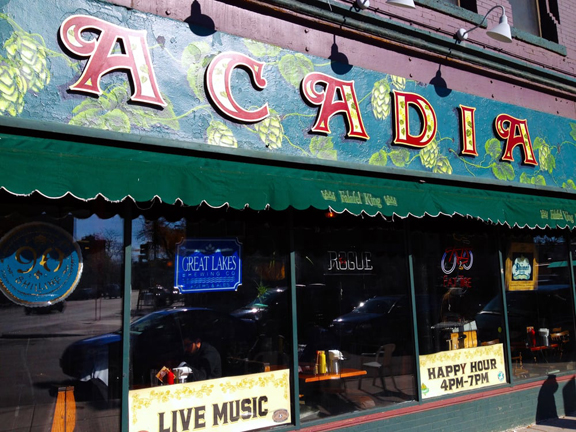
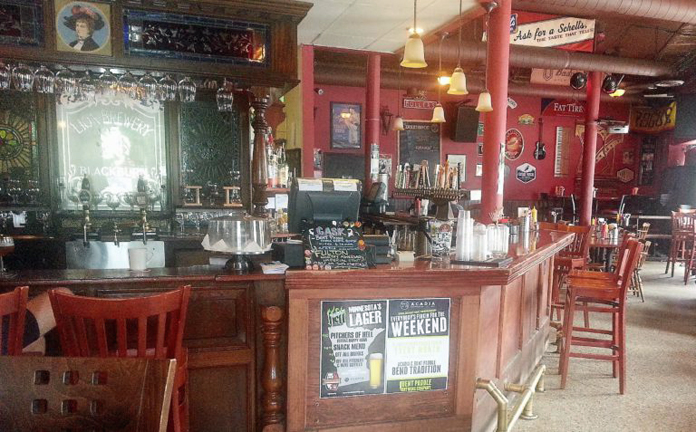
On Tuesday, March 15, 2022, a University of Minnesota commuter shuttle crashed into the Acadia Cafe. Fortunately, only a line cook and bartender were inside, and neither was hurt. Also uninjured were the bus driver and the sole passenger. The restaurant was closed indefinitely and a GoFundMe was set up to compensate workers until it could open again.
